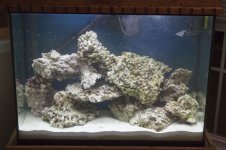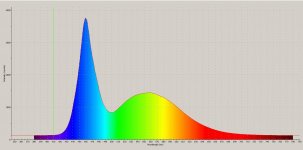Hello all,
I am new to this board. I took a long hiatus from saltwater tanks (8 years). All I can say is WOW have things changed. I am setting up a small 30 gallon reef and right now it only has the water, substrate and about 30 lbs of live rock. I plan on adding and addition 30-40 lbs more this weekend.
Anyway, right now all I have is the standard 17w plain old top light that came with the tank. While it does light up the tank I know I need something welses before I go farther.
It jsut so happens that I am an engineer for one of the largest led manufacturers in the US, We actually make the led chips. I have been tinkering with using LED lighting on my tank.
Right now I have a light fixture that uses only 20 of our super bright XLamp leds. These are extremely high power white LED's, in fact we recently completely replaced all the metal halide lamps in one of the city s parking garages. Not only does it use 40% less energy it is a lot brighter.
What I am wondering about is what kind of light is required to keep a good reef tank with all the nice inverts and coral? Is there a certain spectrum, color temperature, brightness minimum that I should be looking for? I can imagine that it is not enough to just have a lot of white light. So any information would be helpfull, I am trying to avoid using hot halide lamps and its a good DIY project.
I am new to this board. I took a long hiatus from saltwater tanks (8 years). All I can say is WOW have things changed. I am setting up a small 30 gallon reef and right now it only has the water, substrate and about 30 lbs of live rock. I plan on adding and addition 30-40 lbs more this weekend.
Anyway, right now all I have is the standard 17w plain old top light that came with the tank. While it does light up the tank I know I need something welses before I go farther.
It jsut so happens that I am an engineer for one of the largest led manufacturers in the US, We actually make the led chips. I have been tinkering with using LED lighting on my tank.
Right now I have a light fixture that uses only 20 of our super bright XLamp leds. These are extremely high power white LED's, in fact we recently completely replaced all the metal halide lamps in one of the city s parking garages. Not only does it use 40% less energy it is a lot brighter.
What I am wondering about is what kind of light is required to keep a good reef tank with all the nice inverts and coral? Is there a certain spectrum, color temperature, brightness minimum that I should be looking for? I can imagine that it is not enough to just have a lot of white light. So any information would be helpfull, I am trying to avoid using hot halide lamps and its a good DIY project.








